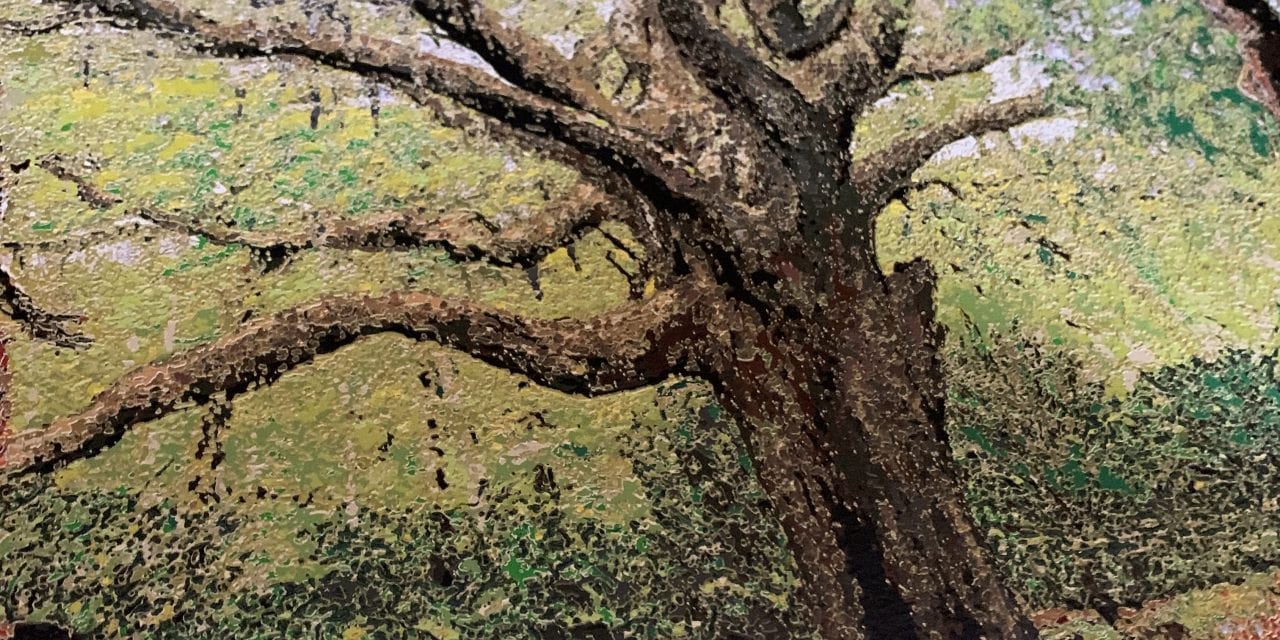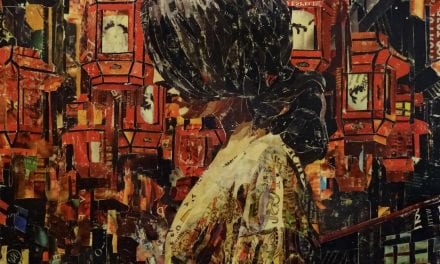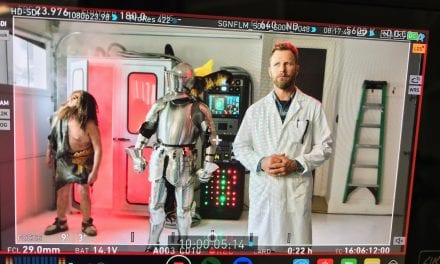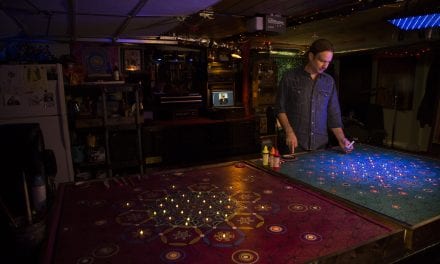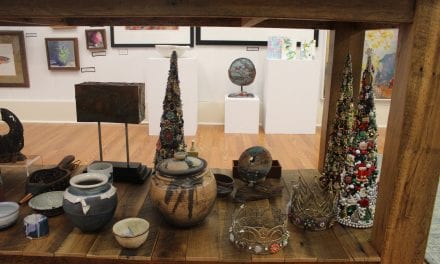In art, sometimes the older methods of creating are ideal. Whether it’s to honor a legacy process or to achieve a certain effect, the tried-and-true ways of making something might be superior to newer modalities.
Such preferences for the traditional forms of creativity may be observed in the art of screen printing. Once a process done entirely by hand, the Leicester Print Workshop says that screen printing originated in China around 221 C.E. to make designs on fabrics. Growing over centuries—both in terms of what could be done with the art form and the number of countries using it—screen printing became more sophisticated. Eventually, in the 1800s, it benefitted from developments that turned it into a field of business.
Nashville artist, master printmaker, and paper maker Terrell Thornhill will be displaying 20 years of his screen printing art on Saturday, June 19 at Popstart Creative Studios. Among his featured works will be what he considers “the most complicated, modern reduction method, screen printing piece of art” in existence. According to the online school The Art of Education University, the process of “reduction screen printing” is explained as “made when an artist creates a multi-colored, layered print using a single print block. The block could be foam, linoleum or even wood. The artist repeats the process of carving and printing over and over until the final look is achieved. Using the reduction process takes the final piece to a whole new level with depth, pattern, and color.”
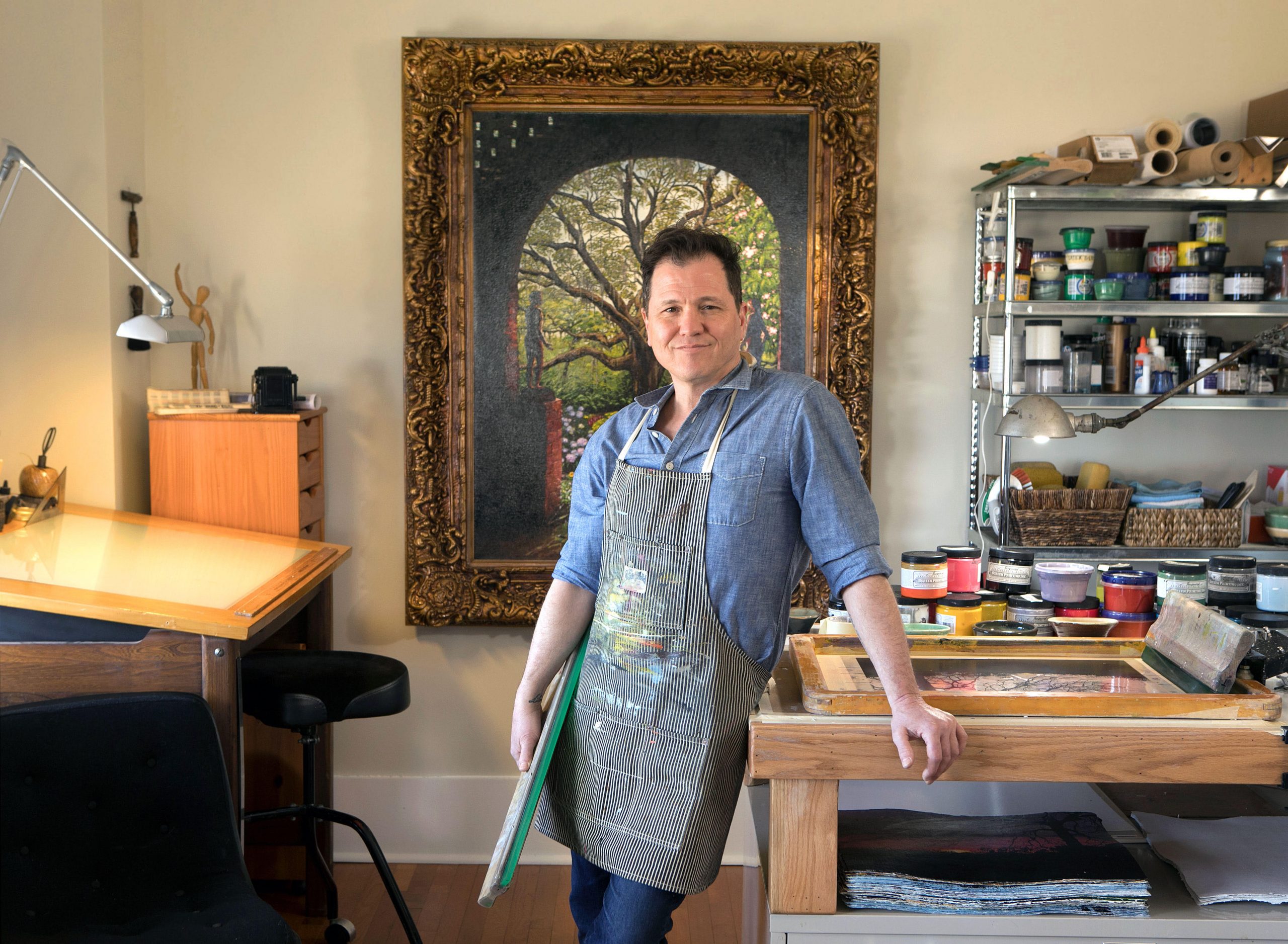
The screen printed art piece—and crowning achievement of the art show—is “The Invitation.” The piece is a 3×4 foot oil painting that per Terrell’s website, “evolved into a massive, Reduction Method Screen Print Project.” The painting features stylized versions of Terrell and his now ex-wife as statuaries, overlooking a metaphorical garden scene from Terrell’s imagination. The garden—as seen through a darkened archway leading outside that was taken from a copy of Southern Living Terrell has had since the eighth grade—represents Terrell’s existence. In addition, each plant in “The Invitation” is inspired by a real plant from various times in his life. The black-eyed Susans, the mimosa grove, hydrangea, and clover flowers are all flora with strong memories tied to each.
“When I first got married… We were very, very, poor,” Terrell tells Launch Engine. “And there was a discussion of whether she was going to take my name or not. And I said, ‘That’s really the only thing of value that I have that I can offer you.”
Terrell created both an original oil painting and screen prints of the same image. Each took about a year to complete. The screen printed version required 57 hand-painted stencils which took 300 hours to paint and involve 86 separate colors or impressions. Amazingly, the painting was almost destroyed by the artist following the divorce from his wife, but luckily avoided being ceremoniously burned when friends intervened.
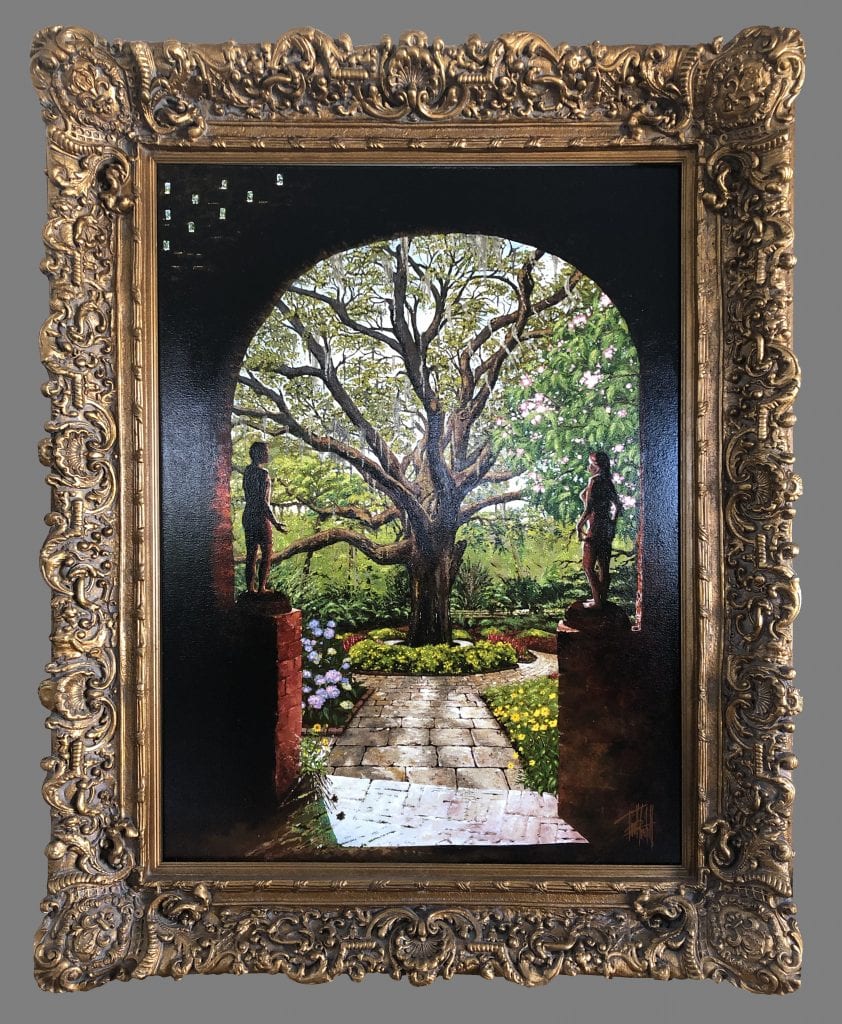
“‘The Invitation’ is still precious to me because it celebrates a moment of immense vulnerability, and that’s what really matters—regardless if it was accepted, remembered or honored by anyone else,” Terrell says.
Working in a hybrid fashion, the artwork of Terrell Thornhill can be thought of as “screen painting,” as his version of screen printing incorporates components of both screen printing and painting, including the stencil-based pochoir technique that was popular in the 1800s.
“The Pochoir technique is applied with a brush by depositing paint,” Terrell explains. “Most people that do art silkscreens [a screen of fine mesh] might call that a ‘monoprint,’” Terrell says, referring to the screen printing process of making a single impression of an image from a reprintable block. Of the various processes, monoprinting is the most like screen printing a painting, with the colors applied into the screen all at once.
As a creator, Terrell is always experimenting, attempting to perfect his craft. As part of this ongoing pursuit of perfection, Terrell wanted to learn how he could make the best quality screen print art possible. Knowing how old the medium is, he began researching the history of screen printing to see how others did it. Terrell discovered his current reduction method process after looking into the old Selectasine Company. Once a famous screen printing shop based in San Francisco, Selectasine created their own equipment for reduction screen printing.
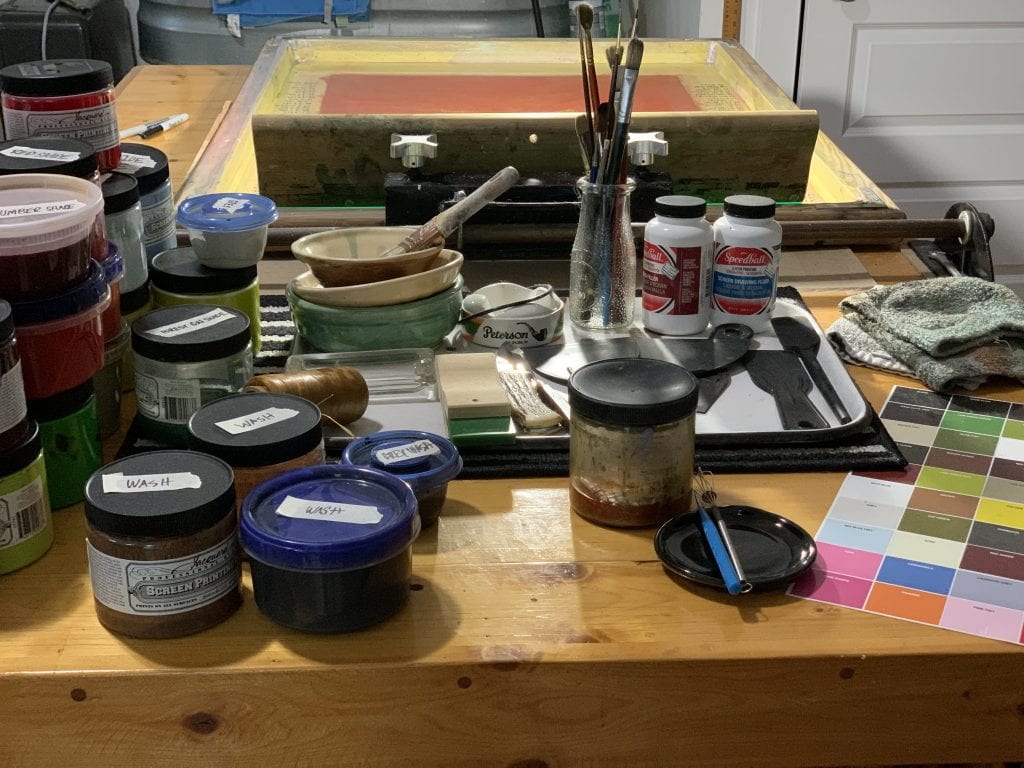
Simply stated, the process of reduction method of screen printing begins with printing the largest swath of color. Next, subsequent colors or impressions are made by reducing the same stencil in the same screen, effectively “stacking” the ink in layers as you build the print. In the case of many of Thornhill’s reduction method prints, the layers of ink are so stacked up, the prints develop a leathery texture.
In his research, Terrell was able to get his hands on the patents for the equipment and reverse engineer how the Selectasine Company was able to do it.
“A whole world opened up for me,” he says. “The technique [Selectasine process] that I’ve rediscovered is the same technique that they used to use before the modern, photographic method of screen printing.”
Terrell says that he’s probably the only person in North America doing reduction screen printing at the level he’s doing it. What gives him confidence in saying this is that he actually reached out to Andy MacDougall, who helped with the book “A History of Screen Printing: How an Art Evolved into an Industry.”
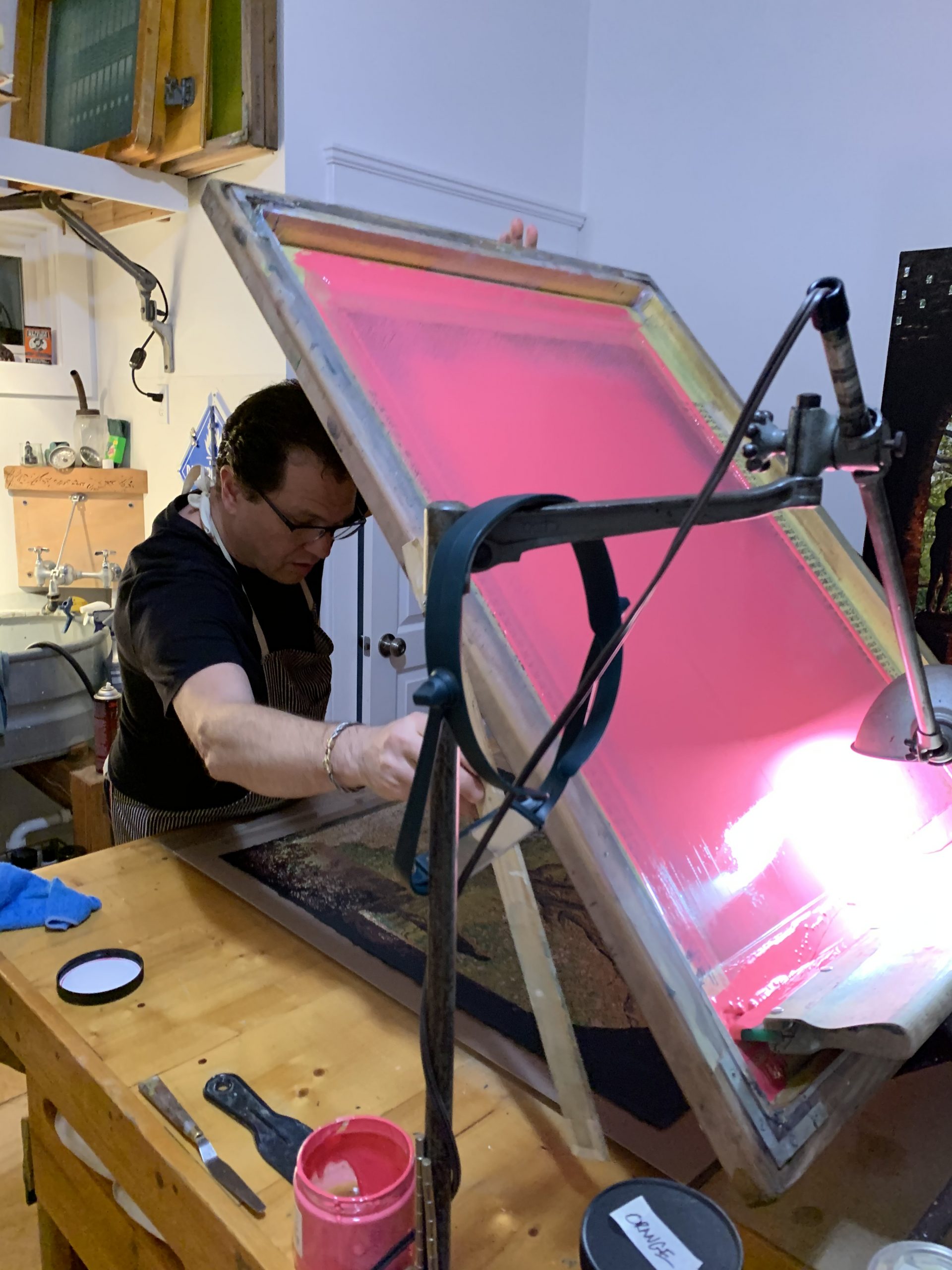
Terrell recalls, “I called Andy and said, ‘Do you know anybody doing the old reduction Selectasine process?’ He goes, ‘Well, I think they make you do like a four color [print] in art school or something, just to kind of figure it out. But why would you want to?’ (Laughs) It is the very opposite of an efficient process. And a lot of it is hand-intensive—hand painting in the stencil instead of using modern photographic methods, exposing the screen to light and washing it out.”
Regardless of this negative response, Terrell wanted to know what the reduction method had to teach him. He had been screen printing his entire life, and wanted to find his next challenge.
“What appeals to me about the reduction method of screen printing is it’s the perfect combination of chemistry, engineering, and art…” Terrell says. “It lends itself to way more creative options in the process.”
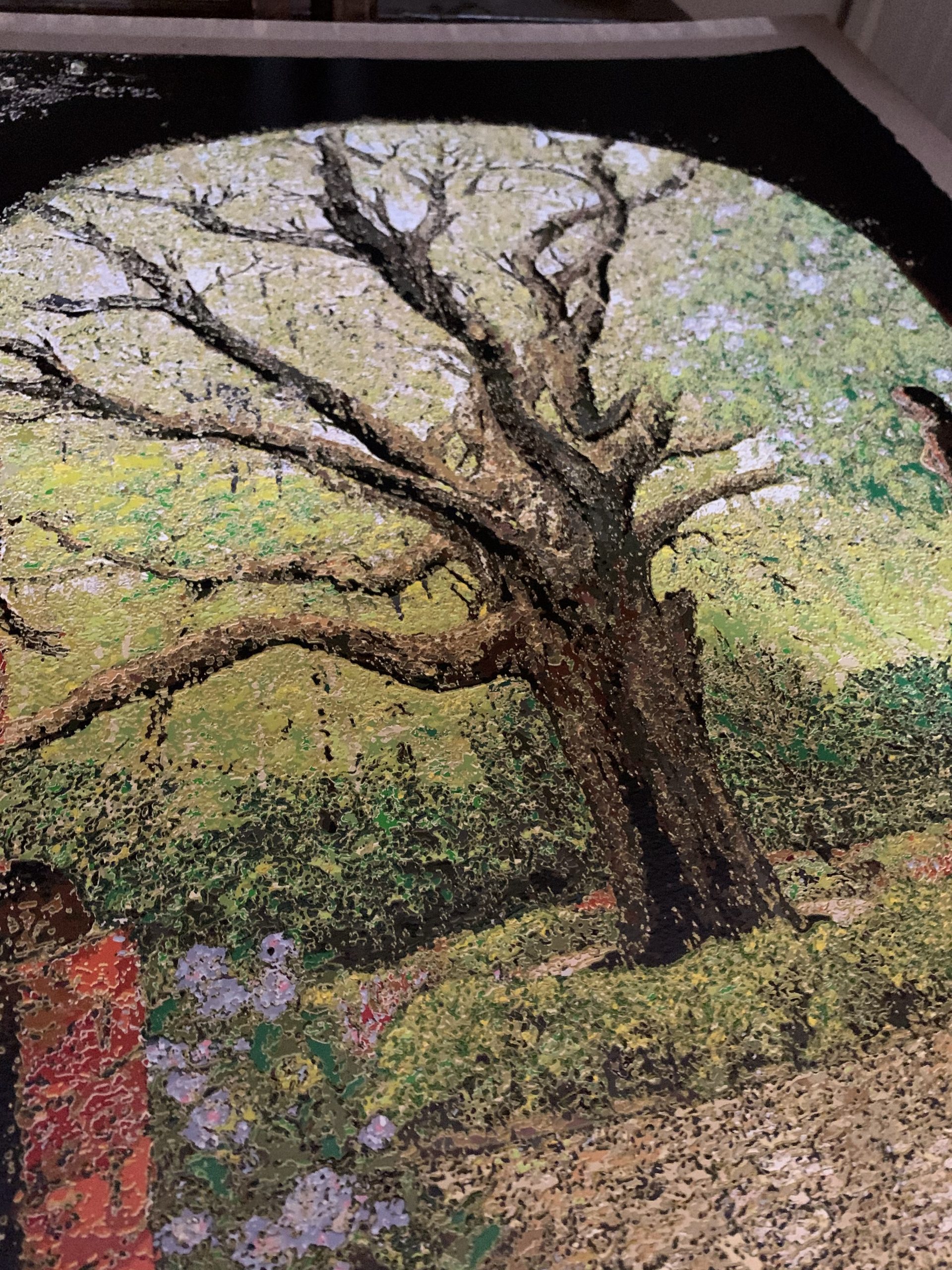
The process is laborious to say the least, which is why Terrell can’t find anyone else making reduction method screen prints at the level he is. Terrell says, “I’ve had people from all over the world send me an email apologizing for the broken English, saying, ‘I’ve always heard about this process, but I’ve never seen it done. And I’ve definitely never seen it done to this degree.’”
Because he’s the only person he knows who is doing reduction screen printing, Terrell feels both tremendous responsibility and excitement about his work. Sharing that he wants to teach his process, he says, “I want to resurrect reduction screen printing as a viable art form… There are people like me who, when I expose it to them, when I show them what I do, they’re like, ‘I’ve never seen that!’”
“The Art of Terrell Thornhill” exhibit will have its art show and open house on Saturday, June 19 at 6 p.m. at Popstart Creative Studios. For further information about Terrell Thornhill, be sure to visit his website and social media.

